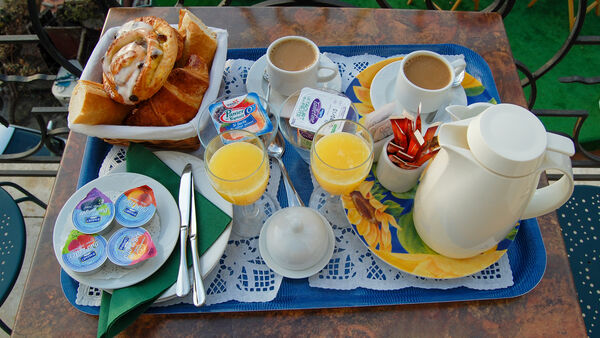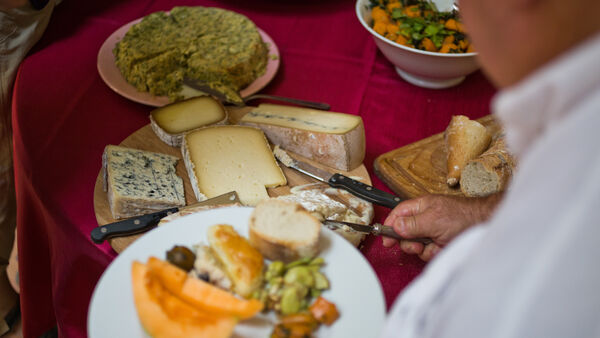Eating in France



By Rick Steves and Steve Smith
The French eat long and well. Relaxed lunches, three-hour dinners, and endless hours sitting in outdoor cafés are the norm. They have a legislated 35-hour workweek and a self-imposed 36-hour eat-week. In France, chefs are as famous as great athletes. Local cafés, cuisine, and wines should become a highlight of any French adventure — sightseeing for your palate. Let your taste buds travel first class in France.
The French start the day with a light breakfast. It's typically café au lait, hot chocolate, or tea; a roll with butter and marmalade; and a croissant. While breakfasts are available at your hotel, they're cheaper at corner cafés (but no coffee refills). It's fine to buy a croissant at a bakery and eat it with your cup of coffee at a café. Better still, some bakeries offer worthwhile breakfast deals with juice, croissant, and coffee or tea.
For many lunches, I picnic or munch a take-away sandwich from a boulangerie (bakery). Picnics can be first-class affairs and adventures in high cuisine. Be daring. Try the smelly cheeses, ugly pâtés, sissy quiches, and baby yogurts. Local shopkeepers are accustomed to selling small quantities of produce. Gather supplies early; you'll want to visit several small stores to assemble a complete meal, and many close at noon. Look for a boulangerie, a crémerie or fromagerie (cheeses), a charcuterie (deli items, meats, and pâtés), an épicerie or alimentation (small grocery with veggies, drinks, and so on), and a pâtisserie (delicious pastries). Throughout France you'll find bakeries and small stands selling sandwiches, quiche, and pizza-like items to go. These are a great value and streamline the picnic process. In stores, unrefrigerated soft drinks, bottled water, and beer are one-third the price of cold drinks. Avoid buying drinks to go at streetside stands; you'll find them far cheaper in a shop.
French cafés and brasseries provide light meals and a refuge from museum and church overload. They generally open by 7 a.m., but closing times vary wildly. Unlike at restaurants, food is served throughout the day. Be aware that cafés charge different prices for the same drink, depending upon where you want to be seated. Prices are posted: comptoir (counter/bar) and the more expensive salle (seated). Don't pay for your drink at the bar if you want to sit at a table.
Keep in mind that by American standards, the French undercook meats: rare or saignant is close to raw; medium or à point is rare; and well-done or bien cuit is medium. If all you'd like for dinner is a salad, find a café instead of a restaurant, where you're expected to order a main course. French restaurants open for dinner at 7 p.m. and are typically most crowded about 8:30 (the early bird gets the table). Choose restaurants filled with locals, not places with big neon signs boasting, "We Speak English." Trust your instincts. If the menu (la carte) isn't posted outside, move along.
Bon appétit!
Steve Smith is the co-author of the Rick Steves France guidebook.

